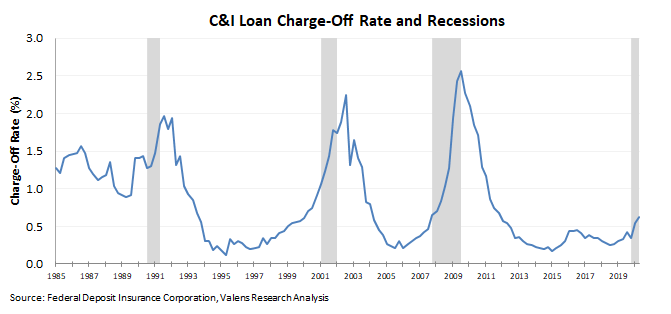These indicators show why we are confident in the health of credit markets

In addition to looking at aggregate Uniform Accounting data, we like to look at other indicators to have a holistic view of the market. Many equity investors fail to consider how the credit market and its signals can help us understand the stock market.
Today, we will look at one of these important credit indicators to see if there is anything to be worried about in credit markets.
Investor Essentials Daily:
The Monday Macro Report
Powered by Valens Research
Too many equity investors neglect to understand the credit side of the businesses they invest in. Something that sets us apart from many Wall Street research firms is our nearly equal focus on credit and equity. It comes from sage advice I’ll always remember getting from cross-capital investing great Mitch Julis of Canyon Capital:
“To be a great equity investor, you need to be a great credit analyst.”
It’s important because companies’ debt profiles affect how the stock can trade. An income-focused investor who wants to know if a company can fund its dividend should start by looking at its credit profile, not what the equity markets are saying.
Similarly, growth investors or turnaround investors need to start by understanding upcoming debt maturities and how they could inhibit management’s ability to execute their long-term growth plans, or even worse, force a company into bankruptcy.
We use the same Uniform Accounting framework for both equity and corporate credit. We understand that if we want to be great equity investors, we need to look at credit.
That’s not just true for individual equities. It is true for the market as a whole.
By taking our credit research and aggregating it, we can get a picture of the entire economy. As we recently highlighted, our Credit Cash Flow Prime (CCFP) analysis showed companies have limited debt maturities coming up. This means there are limited issues with potential defaults.
In addition to the CCFP, there are some other indicators we like to look at to have a clear understanding of credit in the economy.
Two powerful indicators that help us to understand credit are the Senior Loan Officer Opinion Survey (SLOOS) and loan charge-off rates.
The SLOOS allows us to see how willing banks are to lend to creditors. When the index is positive, it is harder for people to borrow.
When the index is negative, it is becoming easier for people to borrow.
Currently, the SLOOS is in positive territory and is near its highs of the past decade. Normally right now we’d be highlighting that alarm bells are going off in our credit macro analytics.
However, there are a handful of reasons why this is not concerning.
The first is the Federal Government has taken multiple steps to free up capital flows. The Federal Reserve’s Main Street Lending and the Treasury’s Paycheck Protection Program have helped to fill in the lending gap for small companies from banks that have tightened. And with market interest rates exceptionally low, big companies are able to tap credit markets to raise debt.
Another reason to not be concerned is because the rate of tightening of credit based on the SLOOS is already coming off its highs from the beginning of the pandemic. The downward trend in recent months bodes well for the future.
Banks generally restrict lending not just because they’re worried about loans defaulting, but because they need to rebuild their balance sheets after older, riskier loans have failed.
When loans fail, banks don’t deploy new capital. Instead, they wait for the payments from debt they’ve already issued that is still paying to help rebuild capital levels until they are comfortable lending again. So the worse the loan default rates, the longer it will take for banks to be comfortable lending again, to fuel economic growth.
Watching loan charge-offs is a useful way to understand how bad default rates are for a bank’s borrowers, and therefore how slowly a recovery from a recession might be.
Right now, loan charge-offs are at a slightly elevated level. However, the rate is nowhere near the highs of the Great Recession or the dot-com bubble. More importantly, charge-offs are not near the levels they normally are this far into a recession.
This is incredibly important for the economy.
If the charge-off rate can stay low relative to normal recessions, banks will not take as long to rebuild balance sheets. Therefore, even if some companies default, banks can start to lend more aggressively sooner.
Looking at these two graphs and the context behind them explain why we are not worried about credit availability. Even as some governmental programs run out, banks will likely be able to ramp up lending sooner than normal to fill that gap.
Thanks to our credit data, we can have confidence in our equity market outlook, and it’s why we continue to think there’s no major risk to the market anytime soon.
Best regards,
Joel Litman
Chief Investment Strategist
at Valens Research






